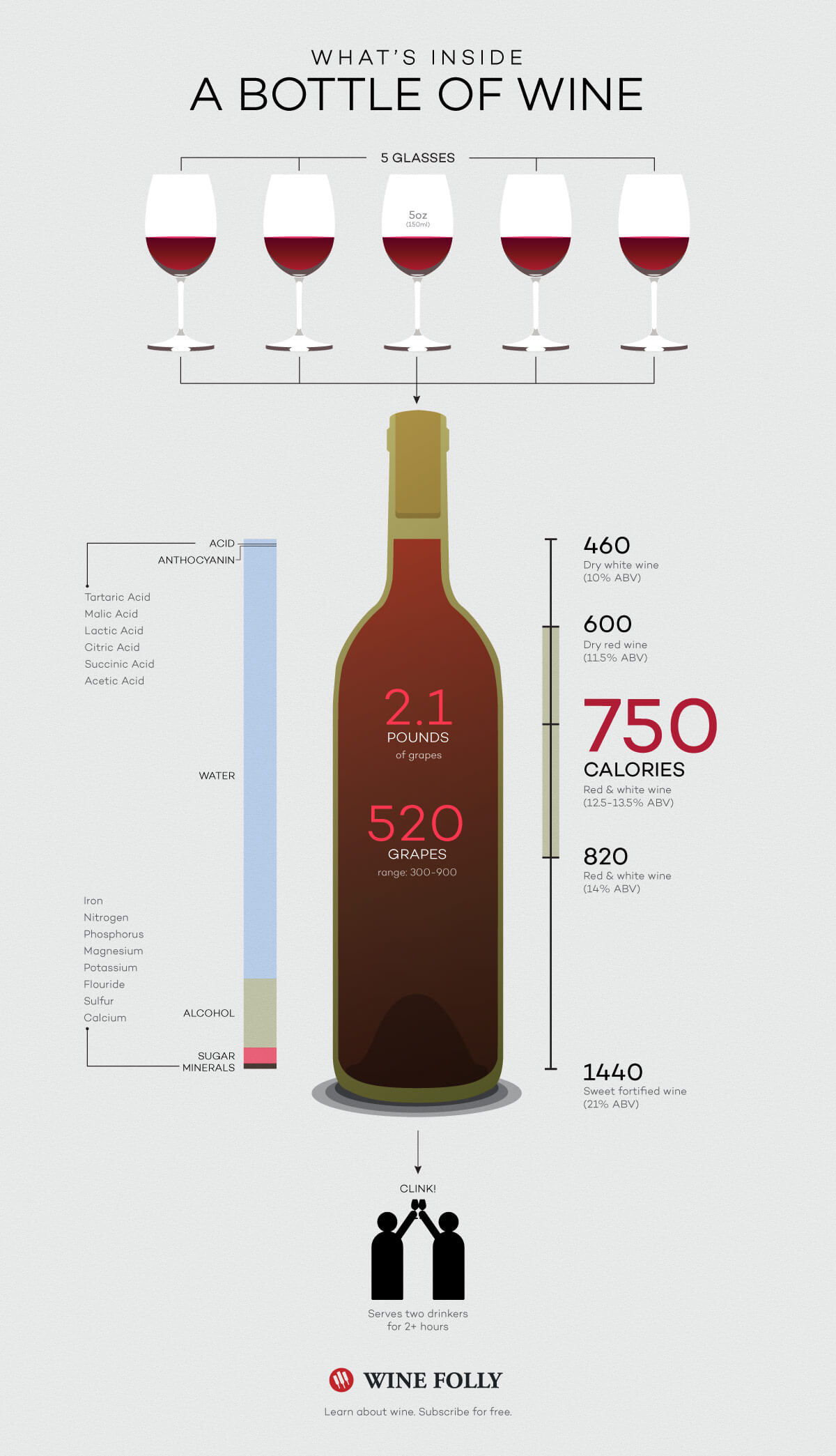How many calories and units of alcohol are there in wine?

A glass of wine might have more calories and alcohol in it than you would expect.
How many calories are in wine?
All alcohol – including the alcohol in wine, whether it’s red, white, rosé, or sparkling like prosecco or champagne – is made from natural starch and sugar, and hence is calorific
But how many calories in a glass or bottle of wine?
It depends on the volume (and % alcohol). But for a low-average strength (say 12%), its about:
- 175 ml (medium glass) – 160 calories
- 250 ml (large glass) – 230 calories = similar number of calories as an ice cream sundae
- Bottle – 700 calories.
There will more calories in higher strength wine as shown below.
How many glasses of wine are there in a bottle?

What’s more, calories from alcohol are ’empty calories’, meaning they have no nutritional value, they don’t benefit our bodies in any way. So, over time, drinking too much can lead to weight gain and start to affect your appearance.
Type of wine and calories
The type of wine you drink doesn’t make much difference.

How much alcohol is in wine?
It’s easy to see how much alcohol is in any wine – just look out for the Alcohol by Volume (ABV) which you’ll find on the label.
The ABV tells you what percentage of the wine is alcohol. The higher the ABV, the more alcohol is in the drink and the stronger it is – for example, a 13% ABV wine contains 13% pure alcohol.
The amount of alcohol in wine can vary – from about 11.5% to 14.5%.
A typical medium strength (175ml) glass of wine has around 2.3 units of alcohol. That means drinking more than six medium glasses of wine a week would put you above the UK Chief Medical Officers’ (CMO) low risk drinking guidelines, of drinking less than 14 units a week.

